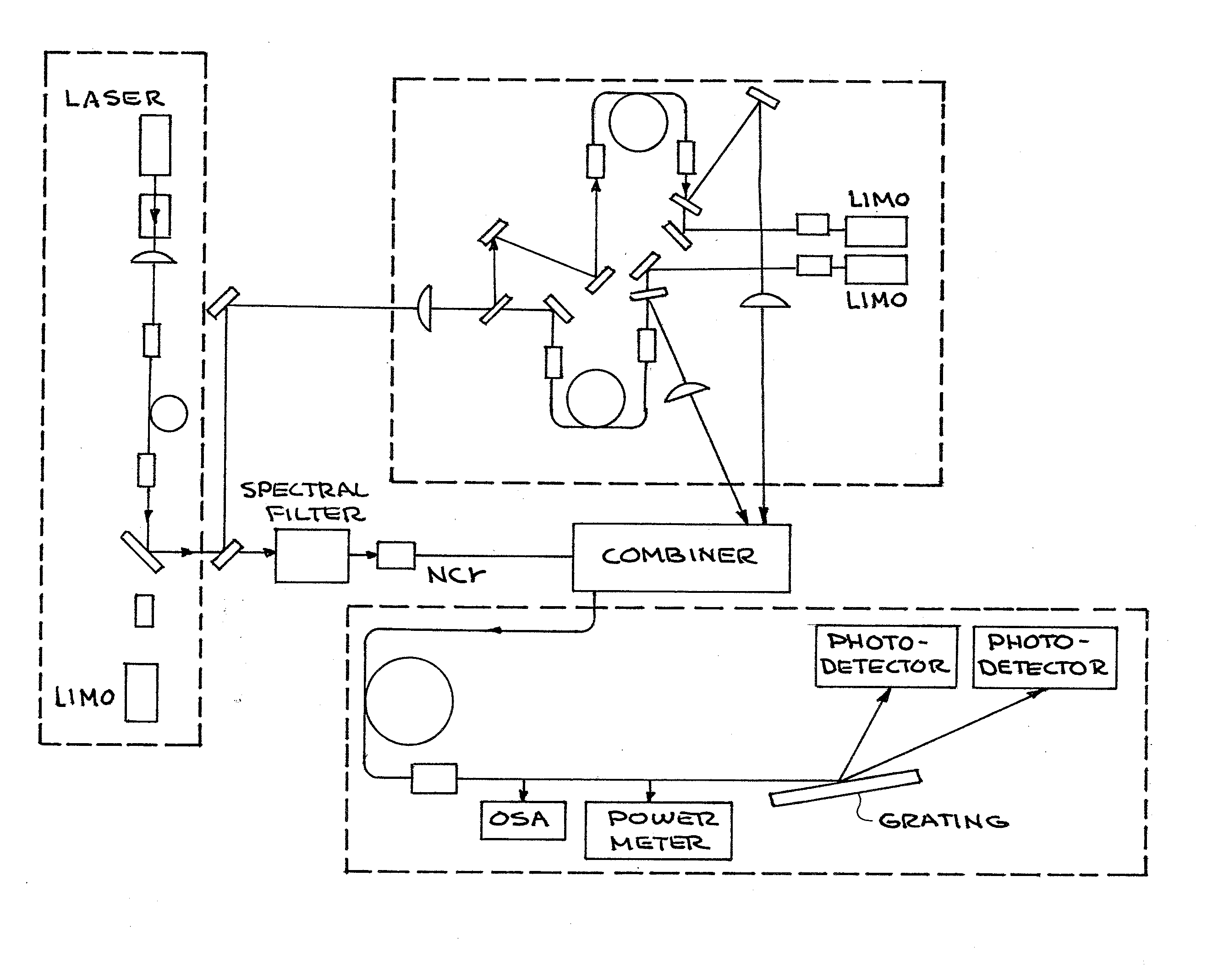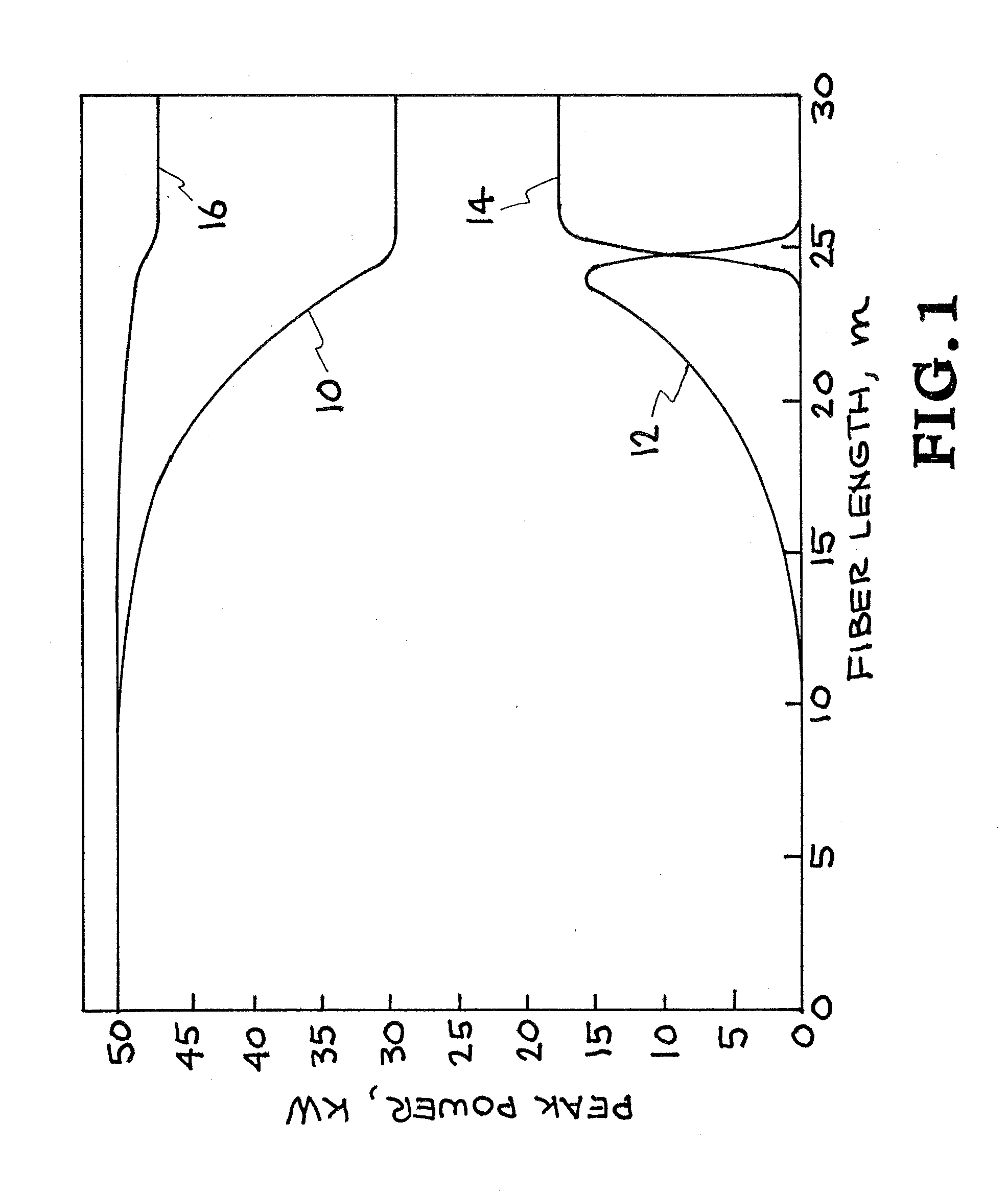Apparatus and method for enabling quantum-defect-limited conversion efficiency in cladding-pumped raman fiber lasers
a technology of raman fiber laser and quantum defect limitation, which is applied in the field of fiber lasers, can solve the problems of limiting the conversion efficiency, clamping the achievable brightness enhancement, and the inability to extend the diameter ratio indefinitely, and achieves high conversion efficiency, high brightness enhancement, and brightness enhancement of diode pump sources.
- Summary
- Abstract
- Description
- Claims
- Application Information
AI Technical Summary
Benefits of technology
Problems solved by technology
Method used
Image
Examples
Embodiment Construction
[0021]High average power fiber amplifiers and fiber laser oscillators are important candidates for directed energy laser sources, front-end drive laser sources for Inertial Confinement Fusion (ICF), short pulse, compact high flux X-ray sources, and machining. Generally, these are pumped by diode lasers, which are very efficient devices for converting electrical energy to optical energy. At high powers, pump beam quality becomes difficult to achieve. Cladding-pumped fiber lasers provide a means for converting that energy into a diffraction-limited beam in a process referred to as brightness enhancement. To date, Yb3+ fiber lasers have proven to be the best systems for achieving brightness enhancement. However, rare-earth doped fibers emit in fixed spectral bands and require that the diode laser emission spectrum overlap with their absorption band. The present invention provides alternative methods and apparatuses for converting low brightness pump diode laser energy into a high brigh...
PUM
 Login to View More
Login to View More Abstract
Description
Claims
Application Information
 Login to View More
Login to View More - R&D
- Intellectual Property
- Life Sciences
- Materials
- Tech Scout
- Unparalleled Data Quality
- Higher Quality Content
- 60% Fewer Hallucinations
Browse by: Latest US Patents, China's latest patents, Technical Efficacy Thesaurus, Application Domain, Technology Topic, Popular Technical Reports.
© 2025 PatSnap. All rights reserved.Legal|Privacy policy|Modern Slavery Act Transparency Statement|Sitemap|About US| Contact US: help@patsnap.com



